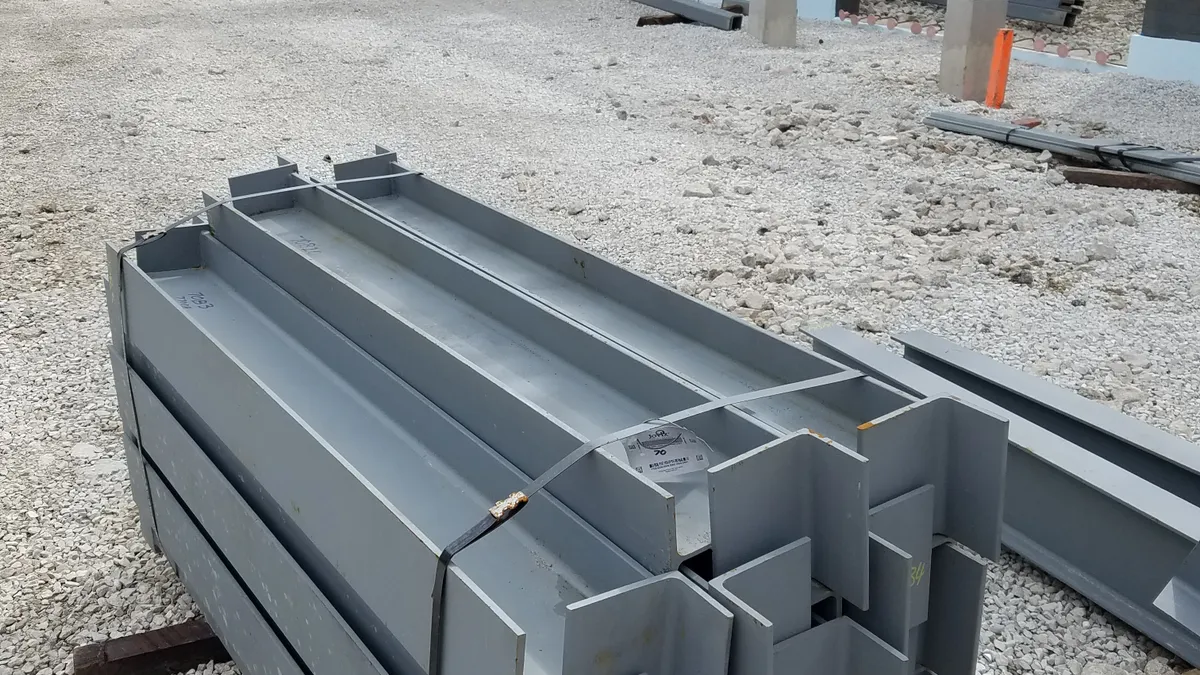Dive Brief:
- Steel remained one of the most in-demand products among manufacturers in Q3, according to a new Thomas report, in part a reflection of how companies are furiously rebuilding their supply chains post-pandemic.
- Steel was the third-most sourced product for the second quarter in a row, according to a snapshot of industrial sourcing activity on Thomasnet, which is used by 93% of Fortune 1000 companies to source products. Demand for steel wire and other basic shapes also skyrocketed, with steel wire seeing a 165% jump YoY on the platform, according to a webinar.
- The high demand for steel has pushed up prices. Campbell Soup said in a September earnings call that it's paying more to use steel in food packaging. Furniture maker Steelcase also announced last month an "unprecedented third price increase" on its products due to the rising costs of steel and other commodities.
Dive Insight:
The pandemic woke companies up to the need to invest in their supply chain after COVID-19 led to factory shutdowns overseas and lengthy delays in deliveries. Businesses raced to stock up on products, build warehouses or find new suppliers closer to home, further pressuring the supply of raw materials including steel.
"We're seeing growing needs in raw materials across the board here from different shapes, all the way through pipe and tube and wiring as well," Shawn Fitzgerald, chief marketing officer for Thomas, said during an October webinar. "What we're witnessing is the rebuilding of supply chains at its very base."
Steel of all types see prices skyrocket
Companies had already begun moving operations to North America prior to the pandemic partly to bring the manufacturing process closer to customers, Thomas CEO Tony Uphoff said. But COVID-19 changed the calculus for nearly every business.
"The pandemic scared the hell out of everybody, even if you weren't disrupted," said Uphoff. "Every company kind of took a look at this and went 'Boy, maybe we should rethink our own supply chain.'"
Steel production hit more than 73 million net tons as of Oct. 9, a 20.2% increase YoY, according to the American Iron and Steel Institute. But higher demand and a lack of skilled workers have left steelmakers struggling to keep up, even with increased production.
Steel prices have skyrocketed as a result. The commodity has seen 14 consecutive months of price increases, and has remained in short supply for 10 months, according to the Institute of Supply Management.
"Steel inflation has been 150% since before COVID," said Steelcase CEO Jim Keane in September. "And that's extraordinary. It's unprecedented as far as I can remember."
This story was first published in our weekly newsletter, Supply Chain Dive: Procurement. Sign up here.















